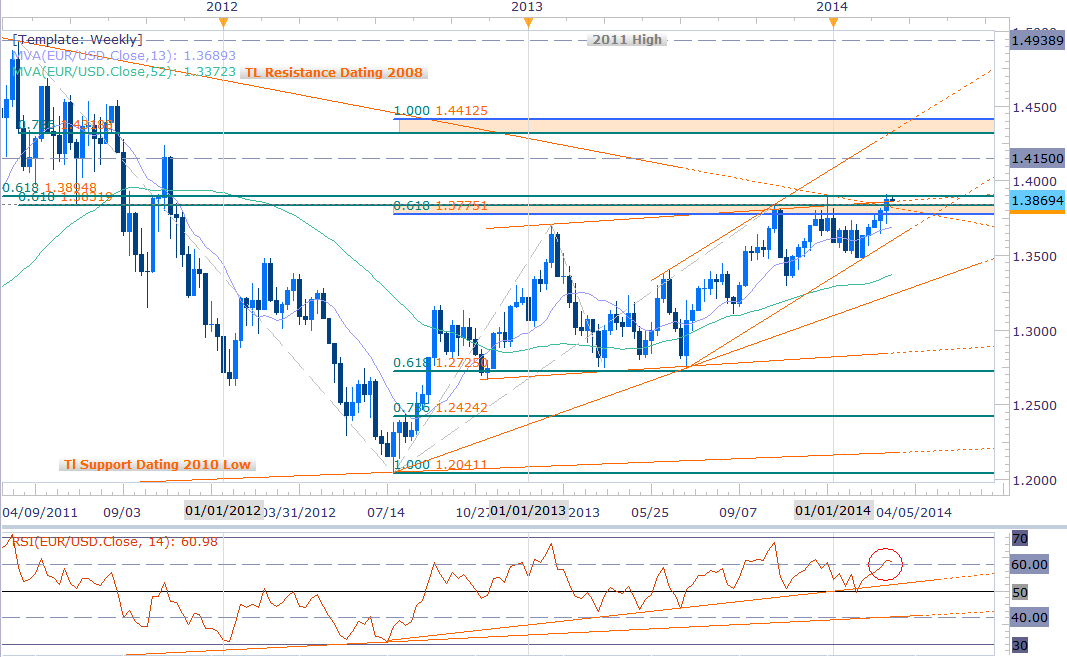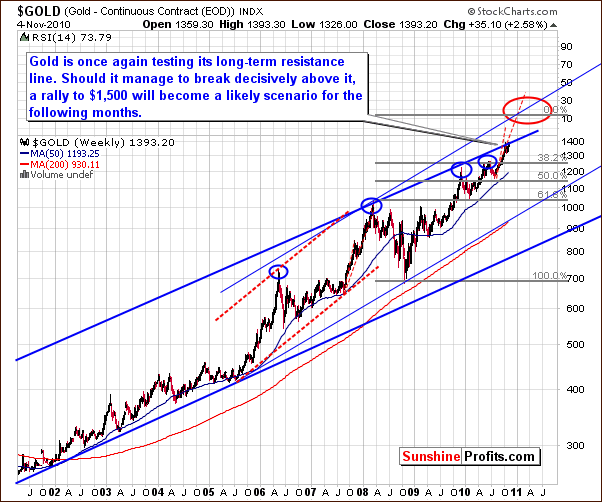Breakout or fakeout The analysis of gold in currencies other than USD
Post on: 23 Май, 2015 No Comment

Breakout or fakeout? The analysis of gold in currencies other than USD
October 19, 2009, Monday, 11:05 GMT | 07:05 EST | 15:35 IST | 18:05 SGT
By Przemyslaw Radomski
In one of the previous essays I’ve drawn Readers’ attention to the fact that gold has now decisively broken above the $1,000 level, and that this profound action has important implications for all gold and silver investors. I have received many e-mails from investors (for which I am thankful) and several of them asked about the price of gold in currencies other than gold. Therefore, this week I will provide you with analysis of gold with emphasis on its price in currencies other than U.S. Dollar.
stockcharts.com ) featuring gold in several key currencies along with the previously featured non-USD version.
The breakout is clearly visible in the popular gold chart on which gold is priced in U.S. Dollars.
From the short-term point of view, taking the RSI into account, we may be at a local top or a few days before it (which is more likely, taking the previously mentioned targets into account). Please note that in mid-September the value of this indicator hovered around the 70 level for a few weeks before the top emerged.
The other indicator included in the above chart — the Stochastic indicator is one of the useful tools for timing bottoms in gold (its reliability for estimating local tops has been limited in the past), but since we are not near one, I will not analyze it deeply today.
Moving on to the non-USD (gold:UDN ratio) chart of gold we see that metal’s value is not yet above it’s previous highs. UDN is the symbol for PowerShares DB US Dollar Index Bearish Fund, which moves in the exact opposite direction to the USD Index. Since the USD Index is a weighted average of dollar’s currency exchange rates with world’s most important currencies, the gold: UDN ratio means the value of gold priced in other currencies.
Gold didn’t break past its previous high in the recent months, but that is not the same high that one looks at when viewing the price of gold in the U.S. Dollar. The March 2008 high that was the top that gold broke above in USD, but taking other currencies into account — it has already broken this level in January. Consequently, the non-USD gold chart different from its USD counterpart but is just as bullish. After all, price broke higher almost a year earlier and has verified that breakout a few times over several months, which means that it is now set to rise higher, most likely above its 2009 high.
The Relative Strength Index is at the overbought level in the long-term perspective, but this does not concern me. The reason is that it is not the first time that it reaches the 70 level after a multi-month consolidation — please take a look at September 2007 and the way RSI shaped at that time — I’ve marked it with a black ellipse. It’s been overbought for about a month before a temporary (!) top emerged. Therefore, taking the historical context into account, the normally bearish implications of the RSI at 70 don’t really apply here.
Two above charts are very similar and it is not without a reason. Since the biggest component of the USD Index is the USD/EUR exchange rate, the USD Index trades in a similar fashion to the USD/EUR exchange rate. Consequently UDN fund trades in the opposite direction to this currency rate, which causes the gold: UDN (non-USD gold) to trade in a very similar way to gold priced in Euros.
Since that is the case, the points made while commenting on the previous chart apply also to this chart. In short — it’s bullish for gold.
The second biggest component of the USD Index is dollar’s exchange rate with yen, so let’s take a look at price of gold in this currency.

The value of gold in yen doesn’t have as clearly defined trend as it was the case on the previous charts, but it doesn’t mean that the implications of this chart are bearish. In fact, while we don’t see a rising trend channel, we do see another bullish pattern. The cup-and-handle pattern, whose handle has been forming since late February 2009 has the same bullish implications as the analogous pattern had on silver market — I wrote about it in April, when silver was at $12. Keeping in mind the the longer the base, the stronger the move rule, one might infer that the rally following breakout of the current handle will take the price of gold in yen much higher, probably above the previous highs.
The three declining resistance lines have been broken, thus increasing the odds of further gains. As far as the RSI’s overbought signal is concerned, the situation is once again similar to the one in September 2007 — the normally bearish implications don’t seem to apply to this ratio. The full version of this essay includes analysis of gold priced in other currencies including Canadian Dollar, British Pound, and Australian Dollar.
Moving on to the more recent price action, this week I will provide you with analysis of the precious metals stocks.
The very recent price action in the mining stocks has been less profound than it was the case with gold itself, but after a correction in the price of gold (during which $1,000 holds) I expect PM stocks to regain their strength.
As far as the short-term is concerned, the GDX ETF (proxy for precious metals stocks) touched its resistance line and dropped slightly. Still, the RSI is not overbought yet, and the volume is not extremely low, so the rally may take us above the dashed resistance line before taking a breather. This is confirmed also by the analysis of the Gold Miners Bullish Percent Index.
As you may see on the above chart, the highest odds that a local top is in are generated by high values of the index along with overbought levels in RSI and William’s %R indicators. Moreover, once RSI moves above the 70 level it is just a watch out signal, it is not yet a confirmation of a top. The top usually takes place several days/weeks after the initial signal is flashed (see vertical dashed and red lines on the chart above for details). Either way, according to the above analysis, we are not at the sell now point yet.
Of course, this does not mean that a local top can’t form here, as speculation on timing (especially in the short term) is a game of probabilities — it is impossible to tell what is going to take place with 100% certainty; we can only estimate what is likely (!).
Summing up, the precious metals market bull market is healthy, virtually regardless of the currency that one decides to price gold/silver in. Naturally, the chart will look differently from the one including gold/silver priced in U.S. Dollars, but if you take the long term into account, it is clear that since 2006 gold has been rising not only in USD (which also marked the beginning of the second stage of the bull market in PMs). Consequently, the long-term situation remains bullish not only in the U.S. Dollar.














